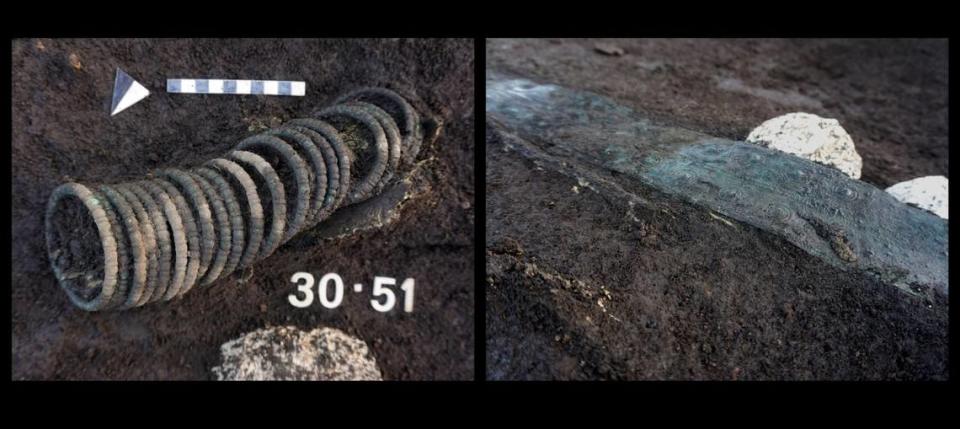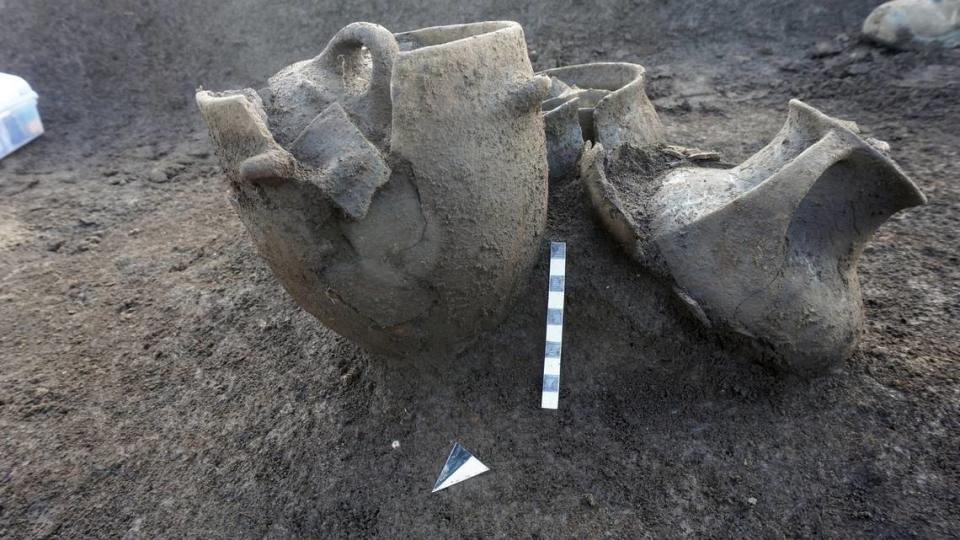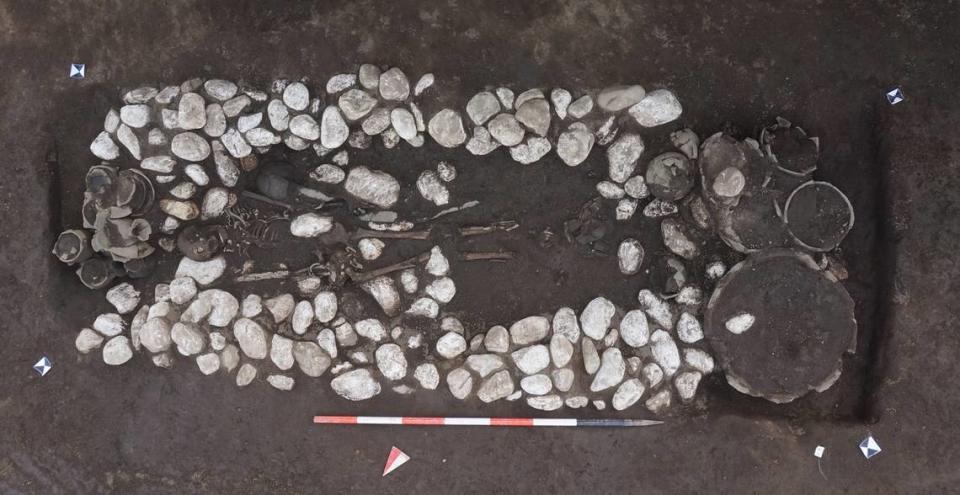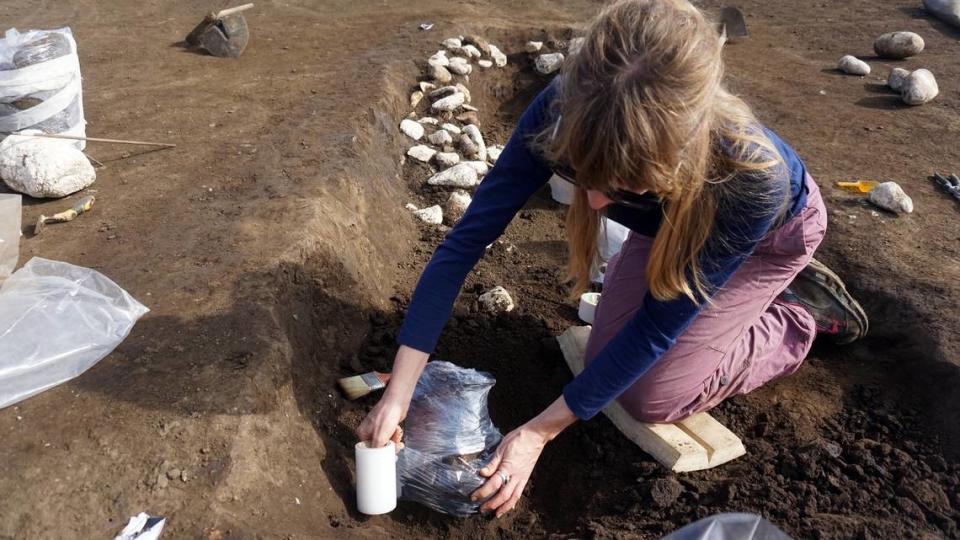Construction for power plant reveals ancient burials in Italy. Take a look at the find
Near the Volturno River in south central Italy, a power company broke ground on the construction of a new power plant.
Before long, they realized there was something ancient buried underneath.
Archaeologists started to brush away the dirt and revealed human remains buried in dozens of tombs, according to an April 29 news release from the Superintendency of Archaeology, Fine Arts and Landscape.
Excavations began, and soon 88 burials had been discovered, officials said. The site was likely used in multiple points in history, according to the release, but the largest and most preserved area of remains dates to the final phases of the Iron Age, around the 7th and 8th centuries B.C.
Uncover more archaeological finds
What are we learning about the past? Here are three of our most eye-catching archaeology stories from the past week.
→ Massive 2,200-year-old tomb with grand interior unearthed in China
→1,000-year-old weapon — the first of its kind — found sticking out of grave in Spain
→ Workers unearth steelworks at medieval castle in UK — and find someone's 'hidey-hole'
Archaeologists said the tombs were part of a culture that buried the dead in pit tombs, some small, and others large and reserved for the elite class.
The burials were filled with a large number of artifacts — ranging from bronze bracelets to carved bone — and the items left behind gave archaeologists a hint as to who was buried there.

The remains of men were surrounded by weapons and vases, while the remains of women were surrounded by pendants, amber and decorative pieces, according to the release.

Two burials stood out from the rest, made of large mounds nearly 50 feet across, officials said.
The mounds were in a circular pattern and would have been reserved for elite members of society, away from the other burials, archaeologists said.

Items such as a large, decorative bronze belt and laminated bronze vases were left with burials of a princely rank, archaeologists said.

The human remains and artifacts were transferred to a laboratory where they will be examined in depth and analyzed, officials said.
Google Translate was used to translate the news release from the Soprintendenza Archeologia Belle Arti e Paesaggio Caserta e Benevento.
Metal detectorist spots green object — and finds rare 400-year-old artifact. See it
Ancient scroll charred by volcanic eruption reveals what Plato did in his final hours
15,000-year-old tooth discovered in cave in Morocco — revealing surprise ancient diet
Turtles may have been taken by ancient humans while traveling — and eaten as snacks

